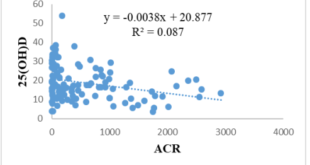APPLICATION TO ASSESS THE RISK OF AMPUTATION IN DIABETIC PATIENTS WITH FOOT DISEASE IN VIETNAM BYWOUNDS, ISCHEMIA AND FOOT INFECTIONS (WIFI) CLASSIFICATION SYSTEM -AN EARLY VERSION ONLINE CALCULATOR
Huynh Le Thai Bao1,2,*, Nguyen Hai Thuy1
1Hue university of medicine and pharmacy 2Duy Tan university
DOI: 10.47122/vjde.2022.53.4
ABSTRACT
Objective: To describe the characteristics of wounds, ischemia, and foot infections classification system (WIfI) in patients with diabetic foot and analyze risk factors relating to the WIfI classification in these patients. Creation of an early version of a risk calculator for diabetic foot patients in Vietnam. Methodology: A cross-sectional descriptive study, 60 patients with diabetic foot disease at Hue Central Hospital from December 19, 2021 to April 29, 2022. Results: Prevalence of amputation risk WIfI classification is 26.7 in stage 1 (very low), 30% in stage 2 (low), 23.3% in stage 3 (medium) and 20% in stage 4 (high). The related factors of the WIfI classification stages were HbA1C (p=0.035), ankle brachial index (ABI) (p=0.05), toe brachial index (TBI) (p=0.01), toe pressure (TP) (p=0.01). The regression model is described by the equation: Risk of amputation = 3.701 – 0.788ABI -1.260TP. An online calculation tool has been installed at banchandaithaoduong.vn, which can be used initially for reference. Conclusion: It is necessary to apply the WIfI classification for the assessment of patients with diabetic foot in Vietnam, paying special attention to the TP and ABI index. The online assessment tool banchandaithaoduong.vn has the potential to develop and be widely used in the future.
Keywords: diabetic foot, calculator, online, banchandaithaoduong.vn
Submission date: 19th Oct 2022
Revised date: 19th Nov 2022
Acceptance date: 19th Dec 2022
Email: [email protected], [email protected]
Tel: 0966929391
- BACKGROUND
Diabetes mellitus is a chronic disease, causing many serious complications and a huge burden on the health, finances of the patient, family and society. In particular, diabetic foot is a important complication, increasing the length of hospital stay and the cost of medication for the patient [1]. Epidemiological statistics show that 85% of amputations begin with an ulcerative lesion [2]. The rate of amputation in diabetic foot patients according to worldwide studies is quite high. According to research by Wukich (2013), this rate is 51% [3], according to Richard (2011) 35% [4], according to Le Tuyet Hoa (2005) 52.9% [5] and Huynh Tan Dat (2018) is 46.5% [6].
The commonly used grades/scales/ classifications are: Rutherford, Fontaine, Wegner, University of Texas. These grades have been widely used in clinical practice but still have many disadvantages. While the Vietnamese diabetic foot is characterized by ischemia and infection. An initial and long-term comprehensive diabetic foot classification for evaluation is required. Since 2014, the European Society of Vascular Surgeons (SVS) has proposed a new classification of WIfI (Wound, Ischemia, and foot Infection) [4]. This classification is based on degree of ischemia, extent of wound, gangrene and infection; used to assess the risk of amputation within 6 months or 1 year [4]. In addition, the WIfI grading also helps to predict ulcer healing in diabetic foot disease, Weaver’s study (2019) shows that the ulcer healing rate of stage 1/2 WIfI is much higher than stage 3/WIfI stage 3/ 4, 77.3% versus 57.2% [7].
To initially assess the distribution of diabetic foot disease as well as factors related to this WIfI category, we conducted a study with these following objectives: Describe the characteristics of the WIfI classification in patients with diabetic foot. Analysis of some factors related to the WIfI classification in patients with diabetic foot disease. Creation of an early version of a risk calculator for diabetic foot patients in Vietnam.
- RESEARCH SUBJECTS AND METHODS
2.1. Subject:
Sample subjects: Diabetic patients with foot disease at Hue Central Hospital from December 19, 2021 to July 29, 2022.
Sample size: 60 patients
2.2. Methodology: Descriptive cross-sectional study and convenience sampling
2.3. Data analysis:
Statistics using SPSS 20.0 software. Analyze univariate relationships by Person’s χ2 test with significance p < 0.05. Multivariable logistic regression analysis for related factors.
2.4. Key variables:
WIfI classification, ABI, TBI, TP, white blood cell count (WBC) were applied according to the European Society of Vascular Surgery SVS 2014. [4]
The goal of controlling blood glucose, lipid serum levels, HbA1c and plasma glucose indexes is applied according to the American Diabetes Association’s (ADA) Standards of Medical Care in Diabetes in 2022.
2.5. Application
The domain banchandaithaoduong.vn is installed with a self-coded online calculation toolkit by the author. Results are set across research.
- RESULTS AND DISCUSSION
3.1. General information of research subjects

Table 1. Sex ratio of study subjects
In the 60 study subjects, the proportion of males was higher than that of females (56.7% versus 43.3%).

Table 2. Average age of study subjects
The average age in our study is 67.23 (+/- 11.12), in which female is 67.31 (+/-10.38) higher than male 67.18 (+/-12.07).

Table 3. Medical history of study subjects
Regarding medical history, in addition to diabetes, most of the patients had a history of comorbidities such as hypertension (71%), dyslipidemia (46.7%).
3.2. Wound, ischemia and foot infection (WIfI) characteristics of study subjects

Table 4. WIfI classification of research subjects by each component
According to each component W, I and fI, most patients have ulcers (W) of all degrees, however, in terms of severity of the disease, component I (ischemia) accounts for the severity at grade 2 and grade 3 higher.

Table 5. Risk of amputation of patients according to the stages of the WifI classification
There are 43.3% of hospitalized patients at amputation risk of moderate and high stage 3and 4, and 56.7% at stage 1 and 2.
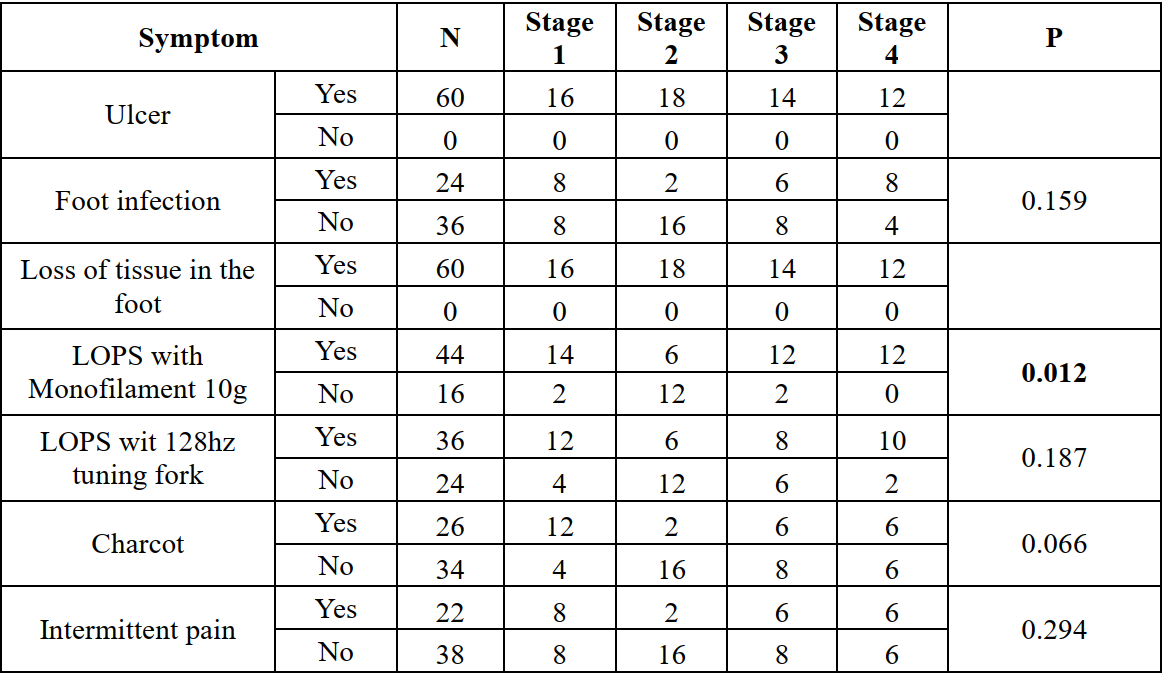
Table 6. Clinical characteristics of study subjects according to the stages of the WIfI . classificationThe 10g Monofilament Foot
Sensory Examination method detected statistically significant associated loss of protective sensation (LOPS) across different stages of diabetic foot (p=0.012)
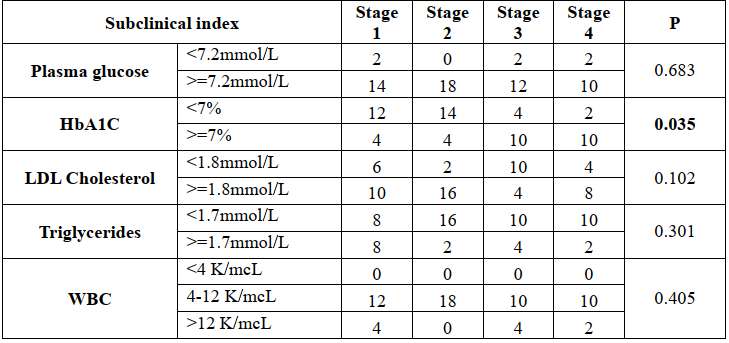
Table 7. Subclinical characteristics of study subjects according to the stages of the WIfI classification
HbA1c was related with risk levels according to amputation stage in patients with diabetic foot (p=0.035).


Table 8. ABI, TBI and TP of the study subjects according to the stages of the WifI classification
ABI, TBI, TP are all statistically significant in terms of study subjects in the risk stages of limb amputation of the WIfI classification (p is 0.05, 0.01, 0.01).
3.3. Relationship between stages of the WIfI classification and risk factors
Table 9. Table of correlation coefficients between the risk of amputation according to WIfI and independent variables
HbA1C is positively correlated with risk of amputation (.sig<0.05), variables ABI, TBI and TP are inversely correlated with risk of amputation (.sig) <0.001)
Table 10. Model Sumary table

The variables in the model explain 83.3% of the variation in the risk of amputation.
Table 11. ANOVAtable

The variable TBI was excluded from the model because of the perfect multivariable addition, and the variable HbA1C was not statistically significant (.Sig>0.05), only two variables ABI and TP were statistically significant
Table 12. Coefficients table

The regression equation of the risk of amputation according to the WIfI scale has the form: Risk of amputation = 3.701 – 0.788ABI-1.260TP
3.4. Install online calculator application
To initially apply the results of this study in clinical practice. We have coded and programmed the online medical calculator named “Risk of amputation in diabetic patients with foot disease”
=> Visit banchandaithaoduong.vn or scan the QR code.
When you Enter the ABI and TP in the input box, The tool calculates, gives results and interprets the risk of amputation.
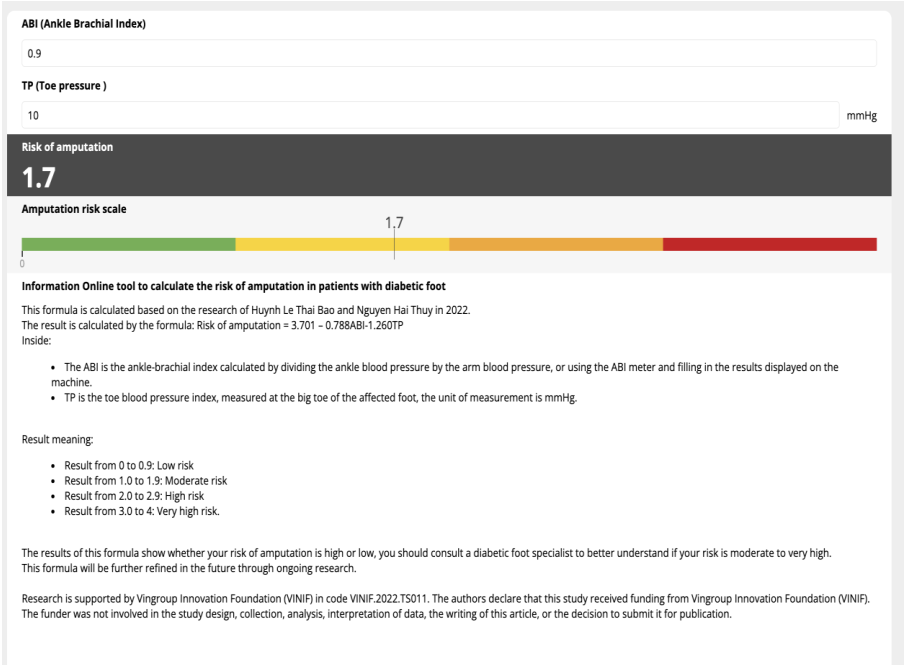
Interface when using on a computer
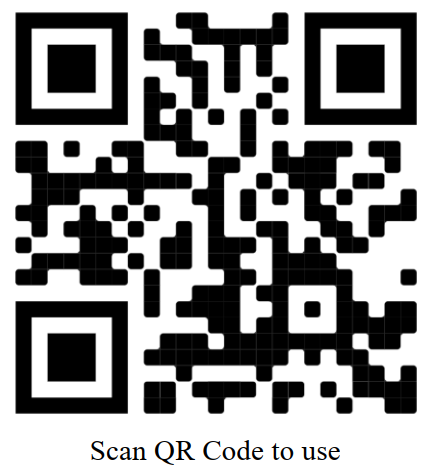
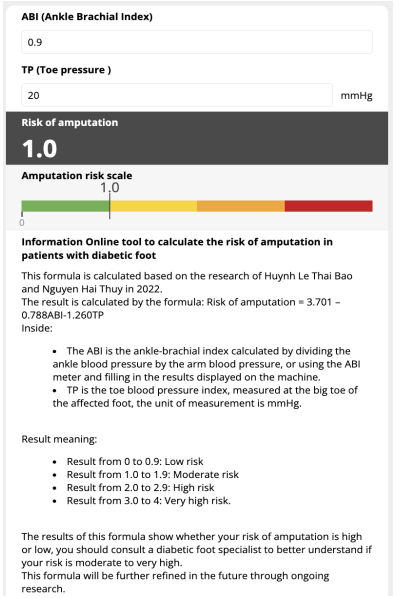
Interface when using on a mobile device
- DISCUSSION
4.1. General characteristics of the study sample
In the 60 research subjects, the proportion of males was higher than females (56.7% compared with 43.3%) (table 1)quite similar to previous studies of Caitlin et al (2017) with the proportion of males accounting for 60.3% or of Jerremy et al. (2015) with a male rate of 59%.
There is a difference in mean age compared with other studies, while the average age of the subjects in our study is 67.23 (table 2), which is higher than that of Caitlin et al. (2017). ), the mean age is 59 and in the study of William et al. (2016), the mean age is. 65.
To explain this, we think that in Vietnam, the subjects with chronic diseases are concentrated in the elderly, besides that, there is a subjective mentality that is often hospitalized when the disease has been prolonged and the symptoms are severe.
Regarding medical history (table 3), in addition to diabetes, most of the patients had a history of comorbidities such as hypertension (71%), dyslipidemia (46.7%) compared with the study of Luke (2015), William (2016), Caitlin (2017) these are also two common diseases with the prevalence of hypertension ranging from 82.9% to 86% and the prevalence of dyslipidemia ranging from 57% to 74%. At the same time, there are also 23.3% of study subjects smoking, lower than the study of William et al. (2016) is 68% or of Jeremy (2015) is 61% and Caitlin (2017) is 54.5% . The explanation for this is that although there are similarities in gender, in Vietnam, women smoke cigarettes much less than men, only about 1.4%.
4.2. Characteristics of the WIfI classification in patients with diabetic foot
The WIfI Classification System is based simply on grading each of the three major factors (Wound, Ischemia, and foot Infection). It is based on a scale from 0 to 3, where 0 represents none, 1 mild, 2 moderate, and 3 severe [4].
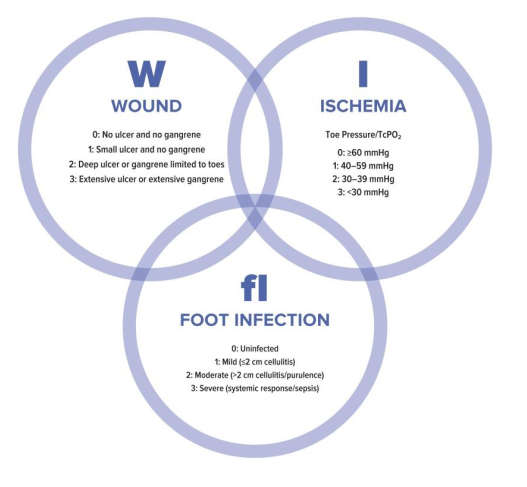
Table 13. Clinical stages (major limb amputation risk) based on Wound, Ischemia, and foot Infection (WIfI) classification
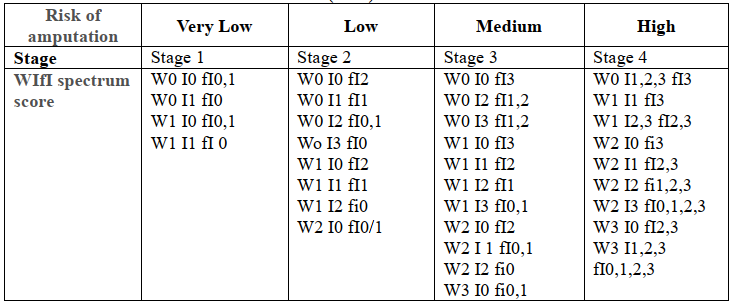
Each clinical case was asked to assign a monitored and carried out prospectively in the limb threat clinical stage to each of the near future theoretical patient combinations that would correlate with risk of amputation (stage 1 – very low; stage 2 – low; stage 3 – moderate; and stage 4 – high). In general, risk of amputation was believed to increase as one proceeds to the right (increasing severity of each of the individual WIfI score components) [4]. According to each component W, I and fI, in our study, most patients have ulcers (W) of all degrees, however, in terms of severity of the disease, component I (ischemia) accounts for the severity at grade 2 and grade 3 higher. Therefore, clinically, it is necessary to screen the degree of foot ischemia with tools such as TP, ABI, TBI because sometimes the ischemia appears in the foot before the ulcer. Compare the components with the WIfI classification of the risk of amputation [4] of the patients in the study. Disease stages 1,2,3,4, corresponding to very low, low, high and very high risk levels (VL, L, M, H), there are 43.3% of hospitalized patients at amputation risk of moderate and high stage (3 and 4), this figure in the study of Weaver et al. is 70.67% [7], of Caitlin W. Hicks et al. 47.6% [8], William P Robinson et al. is 53% [10], Luke X. Zhan is 55.7%. Thereby, it shows that diabetics with foot disease are most at risk of amputation, these are the subjects that need to be continued to be monitored and carried out prospectively in the near future.
4.3. Relationship between the stage of the WIfI classification and risk factors
4.3.1. Subclinical risk factors
HbA1c was related with risk levels according to amputation stage in patients with diabetic foot (p=0.035) (table 7). M. Libby Weaver and William P. Robinson have the same results in this study (p<0.05) [7],[10]. This is consistent with the pathophysiology of diabetic foot disease where higher HbA1c represents poorer glycemic control leading to worsening of diabetic foot disease through hypoperfusion mechanisms, loss of protective sensation and wound necrosis.
4.3.2. Clinical risk factors
The 10g Monofilament Foot Sensory Examination method detected statistically significant associated loss of protective sensation (LOPS) across different stages of diabetic foot (p=0.012) (table 6). In the study of Caitlin W. Hicks, LOPS (93.2%) was statistically significant with p<0.01 [8]. In the study of William P. Robinsot [10], this is not statistically significant (p=0.92). LOPS requires special attention in screening for diabetic foot because in many patients there is no trace but signs of loss of protection and manifestations such as ischemia. LOPS has not been observed in many studies that are statistically significant in association with disease stages of diabetic foot, so many classifications do not include this criterion. ABI, TBI, TP are all statistically significant in terms of study subjects in the risk stages of limb amputation of the WIfI classification (p is 0.05, 0.01, 0.01) (table 8). William P. Robinsot has the same study results when ischemia based on ABI and TP is statistically significant across the stages of WIfI (p<0.01) [10]. This is also consistent with the pathophysiological mechanism when the perfusion is reduced, the earlier and more severe the ulceration and necrosis of the foot occurs. However, the problem and need to be explained is which of the variables ABI, TBI and TP is more valuable and should be paid more attention. To clarify the factors related to the risk of amputation (according to the WIfI classification), we analyzed the relationship of some factors with the risk of amputation of the patient according to Table 9. Based on the analysis analyzed by correlation coefficient table, variable HbA1C is positively correlated with risk of amputation (.sig<0.05), variables ABI, TBI and TP are inversely correlated with risk of amputation (.sig) <0.001). Based on these related factors, we proceed to build a regression model with the dependent variable being the risk of amputation and the independent variable being the variables HbA1C, ABI, TBI, TP, the results are obtained in Table 10. Thereby, the variables in the model explain 83.3% of the variation in the risk of amputation
During the analysis, the variable TBI was excluded from the model because of the perfect multivariable addition, and the variable HbA1C was not statistically significant (.Sig>0.05), only two variables ABI and TP were statistically significant, there is also no polylinearity, so the regression equation of the risk of amputation according to the WIfI classification has the form: Risk of amputation = 3.701 – 0.788ABI-1.260TP
Thus, from the equation we can clearly determine, the risk of amputation will increase when the indicators of ischemia in the diabetic foot decrease, this result is consistent with the statement in the study of William P. Robinsot et al. [10], Weaver ML [7] and Caitlin W. Hicks [8]. We do not currently have studies to the contrary on this issue of ischemia.
4.4. The prospect of the online assessment tool banchandaithaoduong.vn
This is the first calculator of outcome risk for patients with diabetes in Vietnam. Although the data is limited, it nevertheless shows the potential for initial use and future development. About the domain name is very suitable and easy to remember, the tool can be used on all devices with an internet connection. However, there will still be certain difficulties such as the need to transmit a larger data to continuously update the research, as well as the need for a widely equipped machine to support TP and TBI examination for diabetic patients for hospitals in Vietnam.
CONCLUSION
Characteristics of the WIfI classification in patients with diabetic foot
The WIfI classification of amputation risk is 26.7% in stage 1 (VL), 30% in stage 2 (L), 23.3% in stage 3 (M) and 20% in stage 4 (H).
Relationship between the stage of the WIfI classification and risk factors
The HbA1C concentration has a positive correlation with the risk of amputation, and the ABI, TBI, and TP indexes are negatively correlated with this variable. Regression equation for amputation risk according to WIFI grace has the form: Risk of amputation = 3.701 – 0.788ABI-0.126TP
The prospect of banchandaithaoduong.vn This is a promising online calculator that needs to be further developed and updated and
widely used in the future.
FUNDING
Research is supported by Vingroup Innovation Foundation (VINIF) in code VINIF.2022.TS011. The authors declare that this study received funding from Vingroup Innovation Foundation (VINIF). The funder was not involved in the study design, collection, analysis, interpretation of data, the writing of this article, or the decision to submit it for publication.
REFERENCES
- Nguyen Hai Thuy. (2018). University medical textbook: Internal Medicine Pathology. Hue University Press.
- Warren Clayton, T. A. E. (2009). A Review of the Pathophysiology, Classification, and Treatment of Foot Ulcers in Diabetic Patients. Clinical Diabetes, 2009 Apr 27 (2), 52-58.
- Wukich DK, H. K., Raspovic KM, Rosario BL,. (two thousand and thirteen). SIRS is valid in discriminating between severe and moderate diabetic foot infections. Diabetes Care, 2013 Nov; 36(11), 3706-3711.
- Mills, J. L., Sr., Conte, M. S., Armstrong, D. G., Pomposelli, F. B., Schanzer, A., Sidawy, A. N.,. (2014). The Society for Vascular Surgery Lower Extremity Threatened Limb Classification System: risk stratification based on wound, ischemia, and foot infection (WIfI). J Vasc Surg, 59(1), 220-234 e221-222
- Le Tuyet Hoa. (2005). Risk factors for amputation in diabetic foot ulcers. Practical Medicine, 507-508, 742-750.
- Huynh Tan Dat. (2018). Prevalence and factors related to lower extremity amputation in diabetic patients with foot ulcers. Thesis of Doctor of Medicine
- 7. Weaver ML, C., et al. (2019). The Society for Vascular Surgery Wound, Ischemia, and foot Infection (WIfI) classification system predicts wound healing better than direct angiosome perfusion in diabetic foot wounds. Journal of Vascular Surgery, 68(5), 1473–1481.
- Caitlin W. Hicks, et al, (2018). The Society for Vascular Surgery Wound, Ischemia, and foot Infection (WIfI) classification independently predicts wound healing in diabetic foot ulcers. Journal of Vascular Surgery,Volume 68, Issue 4, 1096-1103.
- Jeremy D. Darling, et al, (2017). Predictive ability of the Society for Vascular Surgery Wound, Ischemia, and foot Infection (WIfI) classification system after first-time lower extremity revascularizations. Journal of Vascular Surgery,Volume 65, Issue 3, 695-704.
- William P. Robinson, et al (2017). Society for Vascular Surgery Wound, Ischemia, foot Infection (WIfI) score correlates with the intensity of multimodal limb treatment and patient-centered outcomes in patients with threatened limbs managed in a limb preservation center. Journal of Vascular Surgery, Volume 66, Issue 2, 2017, 488-498.e2,
- Luke X. Zhan, et al, (2015) The Society for Vascular Surgery lower extremity threatened limb classification system based on Wound, Ischemia, and foot Infection (WIfI) correlates with risk of major amputation and time to wound healing. Journal of Vascular Surgery,Volume 61, Issue 4, 939-944
 Hội Nội Tiết – Đái Tháo Đường Miền Trung Việt Nam Hội Nội Tiết – Đái Tháo Đường Miền Trung Việt Nam
Hội Nội Tiết – Đái Tháo Đường Miền Trung Việt Nam Hội Nội Tiết – Đái Tháo Đường Miền Trung Việt Nam




